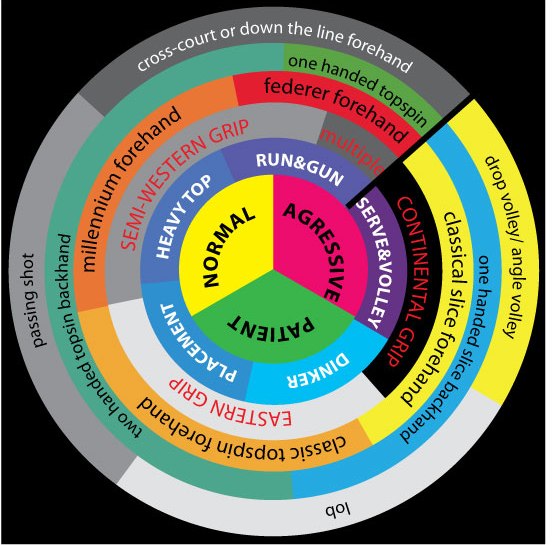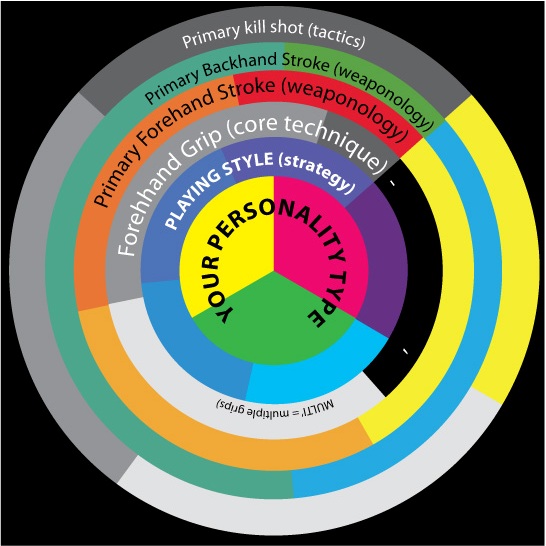Playing Style

If you got no style, you got no game.
This is a just-for-fun tool for determining what style of tennis best suits your idiom. If you are a beginner or intermediate, you can start from the center - from your basic personality type, and you will be able to find your best strokes and strategies. Simple draw a straight line from the center to the edge.
To use the wheel, draw a line from the center of the wheel through your personality type to the outer edge. Remember, there is no "superior" style there are champions in every style (see Styles of the Pros below), and all styles require the same athletic abilities - no style is easier than the others. The most important thing is to choose a style that suits your personality.
If you are an experienced player, try drawing a straight line from the center through your forehand, backhand, grip system, etc. to discover if you or your coaches have made any poor choices (such as a patient dinker with a Federer forehand).
If you have the wrong style, you are at odds with your Self.


